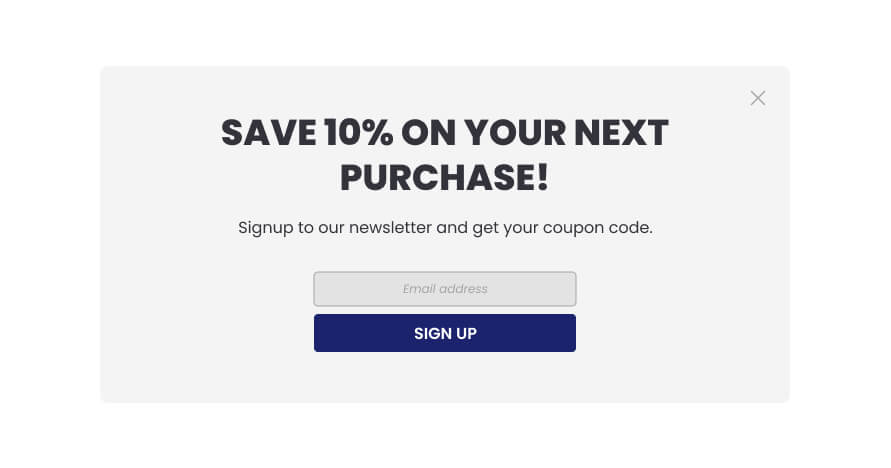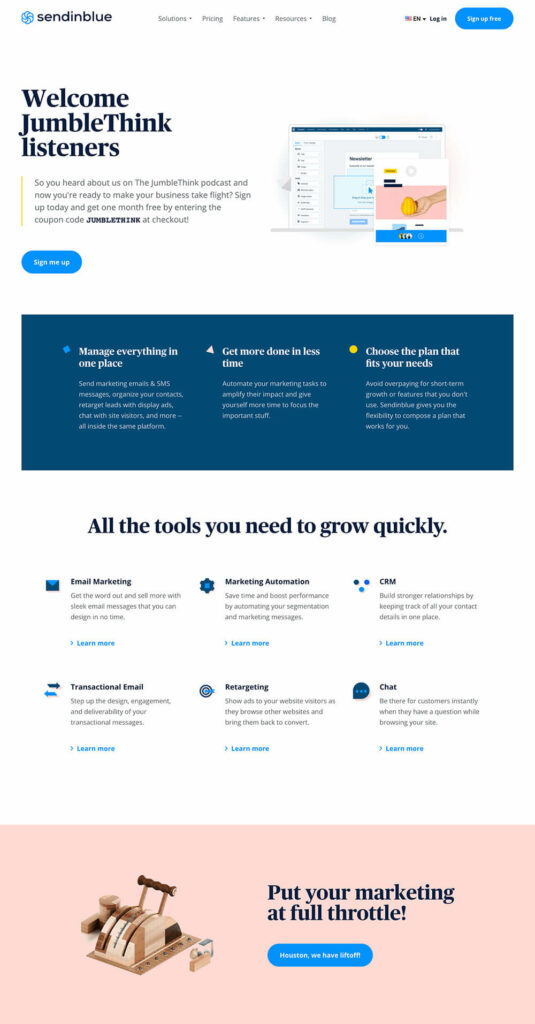Despite the rise of customer data collection, the vast majority of businesses fail to deliver an effective personalized experience to their customers.
In fact, 85% of businesses claim to deliver personalized experiences, while only 60% of consumers think the same.
Source: Twilio Segment
The reason for this gap is the misconception that collecting high-level information about consumers and addressing them by their name is enough.
When our global economy was hit by a pandemic, most brick and mortar stores had to close because people had to go digital. Shockingly, most businesses were not prepared for this sudden shift to digital, and did not have the infrastructure to deal with this increased demand.
From one moment to another, consumers expected businesses to remember who they are and what they like.
It was no secret before that personalization was key to delivering a great online experience, but most of this was based on limited data. Moreover, a recent study has indicated that brands who only utilize high-level data lose 38% of their customers.
Personalization is NOT the same as customization
Showing someone’s name at the top of an email is not personalization. This type of data is definitely a starting point in writing personalized content, but isn’t worth much on its own. I classify this as customization.
It’s like logging in to a software application and having your name and logo show up on your user dashboard. That’s a custom experience, but it doesn’t help you move forward with the challenges you face, nor improve your online experience in any way.
Personalization is a strategy marketers use to tailor messages or experiences to individuals based on concrete data they shared with you or behavioural cues. We’re talking about messages that speak directly to this individual’s needs, interests and challenges.
So instead of spitting out facts about the customers, you take the information you gather from surveys to craft a story that makes it more obvious why they need your solution.
What fascinates me most about this is that your offering does not change or gets more compelling. All you’re doing is adding some depth and color to your message, but consumers feel directly spoken to and pull out their credit cards much faster.
A few examples of personalization include:
- Describing how your solution benefits someone directly because of the need they have told you about
- Speaking their language and using terms specific to the industry they are in
- Suggesting similar products or helpful resources (i.e. lead magnets), depending on what they need or what they’ve already bought from you.
- Showing case studies and testimonials of customers who are similar to them
Bad personalization does more harm than good
While brands are starting to see the rising importance of collecting customer data, the concern for data privacy becomes equally important.

For example, privacy concerns arise when brands use IP-based geolocation to make bold assumptions about what consumers want based on a single interaction. It is precisely this that leads to personalization missing the mark and instead scaring consumers.
Imagine being approached by a clerk in a shopping mall who already knows a little about you, and immediately asks you for some rather personal information. It’s uncomfortable and frankly quite intrusive.
Consent plays a big role here. People want to know why a business asks for their personal information. Why should they trust you?
To build on this, forming assumptions about consumers in this way often leads to irrelevant content being presented to them, resulting in frustration and damaging the reputation of your brand.
An overwhelming 96% of consumers believe there is such a thing as bad personalization. 59% of these consumers say brands use outdated information about them, and 57% say brands get their personal details wrong.
Source: Sitecore
3 implementations of personalization
Up until this point, you’ve seen that personalization isn’t as widely adopted as it should be, and that it’s tricky to implement correctly.
Brands must be smart if they want to use personalization to win the trust and loyalty of consumers.
I’ll outline a few ways to do this, without getting stuck in the customization class or being that creepy brand who wants to move faster than consumers are comfortable with.
Present the right offers
I want you to think of a store you’ve recently purchased from. Whether this was in person or online. Take the first one that came up and visit their website. I’m 99% sure they triggered a popup after less than a minute of browsing that offered you a discount in return for your email.

Instead of knowing that you’re already a customer, they treat you like you have never purchased or even visited them. There is a connection missing here, a gap and a missed opportunity.
Say a sales assistant helped you pick out a new pair of shoes for the summer. You come back a few weeks later, and the natural thing she does is recognize your face and welcome you back. If she’s really good at her job, she even remembers what kind of shoes you’re into. This experience will feel much more pleasant than being a new customer.
This can also be achieved in a consumer’s online journey, and is a powerful way to personalize their experience.
The basic premise of this relies heavily on knowing what an individual consumer is to your brand.
- Are they new to you website? If yes, offer them an incentive that they are willing to give email for.
- Not yet a customer, but already subscribed to your email list? Remind them of your offer and get them to buy from you.
- Is it a returning customer? Present them with relevant products based on their purchase history and behavioural data collected about them.
- A high-value customer? Reward them with a huge discount or a freebie for being loyal!
Look for a tool that can store data from all channels, like email, social media and paid ads. This omnichannel approach can take your customer’s experience to the next level.
Ready to attract more customers?
We help brands like yours expand their social reach and attract more qualified leads by crafting marketing campaigns engineered for success. Get in touch with us and start generating results that have a tangible impact on your bottom line.
Schedule a callCustom sales pitches
For a single product, you can easily have 20+ different sales pitches, depending on the customer’s interests and challenges.
It sounds crazy to actually create 20 different sales pages or email pitches for all variations. And it is. That’s a lot of work!
In fact, a recent study indicated that over 60% of marketers are overwhelmed by the amount of personalized content that needs to be created.
It doesn’t have to be this way.
The way to get around this is to atomize your content and simply swap out blocks of content, depending on the data points you’ve collected about the consumer.
By breaking it up this way, you only need one sales page and one email that can create endless variations.
You basically want to ask a website visitor or subscriber a few questions that:
- Tell you more about who they are and
- what they’re specifically looking for.
Having answers to these questions, you can directly address them and their problem. Hell, you can even pair that with some product suggestions that go with that.
When they feel heard and listened to, they won’t hesitate to do business with you.
Influencer referral integration
Since influencer marketing took off almost a decade ago, some brands have allocated nearly a third of their marketing budget to use influencers to promote their brand. eMarketer reported brands spending over $570M on influencers in 2017. I can’t even begin to imagine what that number must be at 5 years later today.
It’s a highly profitable way to get traffic to your website, but it’s not as effective as it could be when the influencer isn’t showing up on the sales pages you’re leading their subscribers to.
The main thing to remember with influencer marketing is that you’re attracting visitors interested in your product because they trust the advice of the influencer. These types of referral should not be treated the same as any other referral.
This is an opportunity to highlight the trust visitors have in this influencer and showcase them on your sales page.
The following is a fantastic example that illustrates how we can integrate this strategy.
Sendinblue actually created a separate landing page to personally welcome referral traffic sent by JumbleThink.

Start small
Focus on a single channel and segment first. It’s a gradual process and takes failing a few times to get things right. Consider starting with one section of your homepage.
Use the data you have on one customer segment and swap out bits and pieces to tailor the message to their individual needs and frustrations. See it as an experiment, no pressure. Approaching it this way makes it easier to test, analyze and learn from the results.
After that, scale it up to other product pages or automated emails.
The bottom line
Personalization is easy to get wrong, but that makes it such an appealing strategy to explore for brands.
To personalize the customer’s experience, brands need to collect data about what makes them different. Use this information to create a unique experience for each visitor, by identifying how they interact with the brand across all platforms.
Ask yourself how you’re helping people know that they’re at the right place. Are you aware of who they are, and phrasing your pitch in a way that takes into account their needs?
Do everything you can to mirror what you know about them, just like if you were talking face-to-face with someone.
This will make you excel at personalization.

